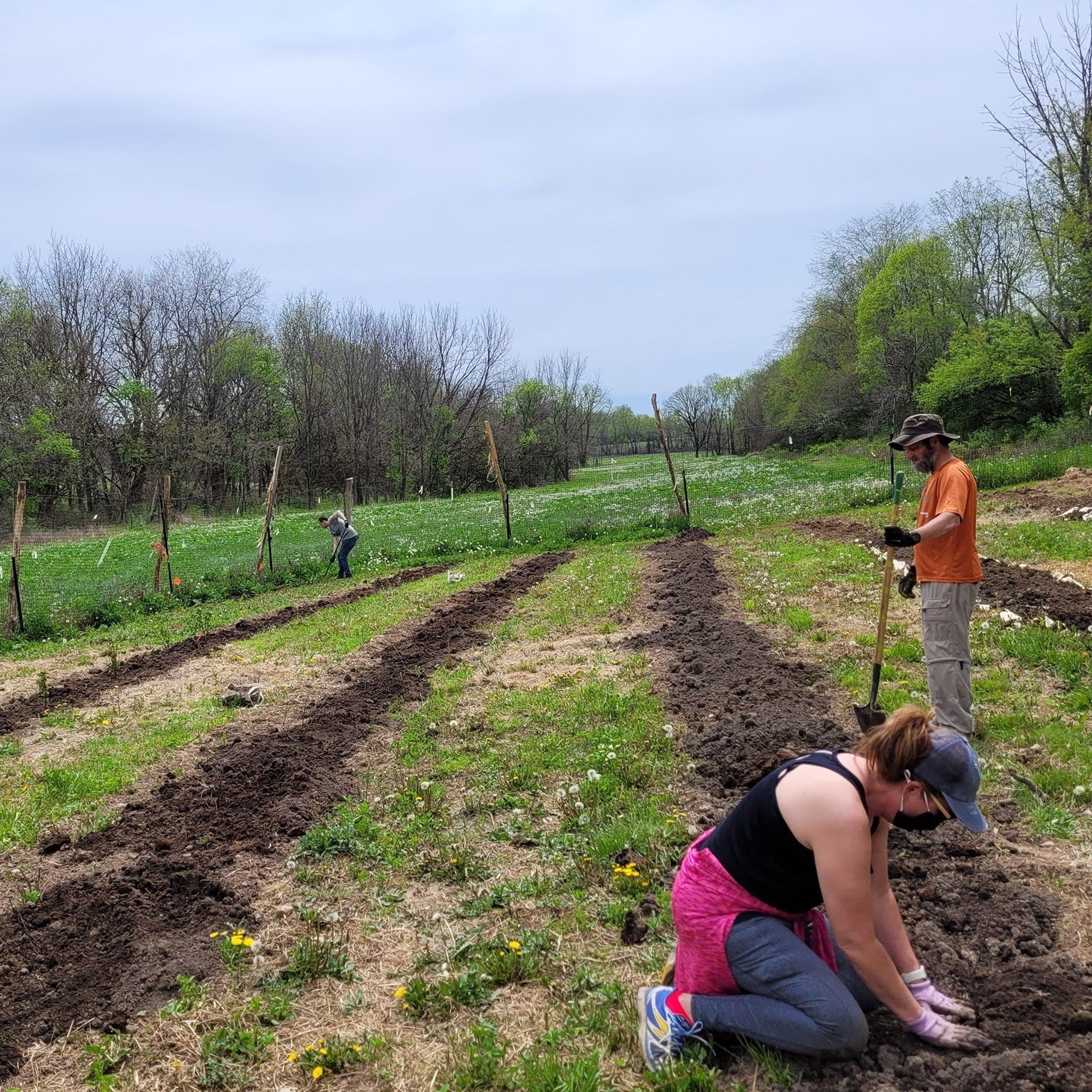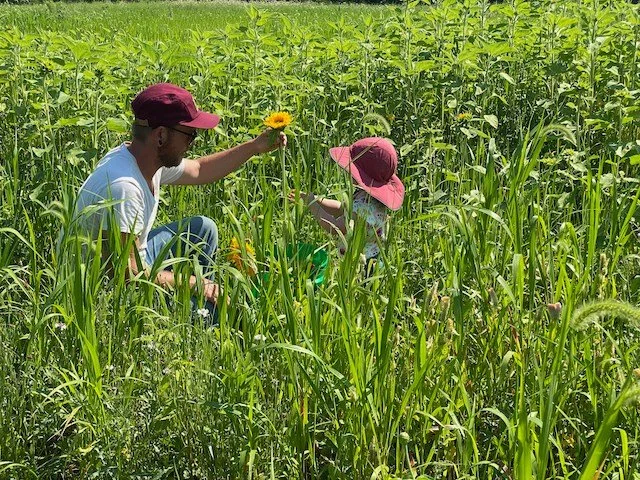
What is Regenerative Agriculture?
Regenerative agriculture is a system of principles and practices that restores and enriches soil health, improves water quality, and builds healthy ecosystems above and below the ground.
Regenerative practices increase biodiversity, pollinator habitat, and resilience to drought and pests. They improve productivity and produce nutrient rich food, resulting in healthier people and healthier communities. They also capture atmospheric carbon in the soil and are considered one of the best tools for countering, and even reversing, climate change.
Regenerative land use practices include permaculture, organic farming, no till/minimum tillage, cover crops, crop rotation, organic composting, managed rotational grazing, and agroforestry.
Other Terms Related to Regenerative Agriculture
Agroecosystems are ecological systems managed and largely shaped by humans to produce food, feed, or fiber.
Agroforestry is a land use system that intentionally integrates trees and shrubs into crop and animal farming systems. There are five recognized agroforestry practices:
Silvopasture combines trees with livestock and their forages on one piece of land.
Alley cropping involves planting crops between rows of trees to provide income while the trees mature.
Forest farming, also called multi-story cropping, involves crops that are grown under a managed forest canopy.
Windbreaks shelter crops, animals, buildings, and soil from wind, snow, dust, and odors. They can also support wildlife and provide another source of income.
Riparian forest buffers are natural or re-established areas along rivers and streams made up of trees, shrubs, and grasses. They can help filter runoff, stabilize banks, support wildlife, and provide another source of income.
Biochar is a charcoal-like soil amendment that is made by burning agricultural and forestry wastes in a controlled process called pyrolysis.
Biodynamic is a system of farming that follows a sustainable, holistic approach which uses only organic, usually locally-sourced materials for fertilizing and soil conditioning, views the farm as a closed, diversified ecosystem, and often bases farming activities on lunar cycles.
Carbon sequestration is the process of capturing and storing carbon dioxide from the atmosphere. Carbon farming uses plants to trap the CO2 and store it in the soil through practices such as cover cropping, no-till, and incorporating organic matter in the soil. It is seen as one of the best tools for mitigating climate change
Cover crops help suppress weeds, conserve soil, protect water quality and control pests and diseases.
Managed intensive rotational grazing is a system in which herds and/or flocks are regularly and systematically moved to fresh rested areas. Studies show that intensively managed herds build soils.
Mycorrhizal fungi connect with plant roots through thread-like fungal tubes called hyphae, creating a mutually beneficial, symbiotic relationship between fungi and plant. The plants provide carbon-rich sugar produced through photosynthesis to the fungi, and fungi, in turn, transfer nutrients from the soil to the plants. The hyphae weave their way through the soil, creating a vast underground fungal network that connects plants with each other and builds a moisture holding soil sponge.
Organic farming is a type of agriculture regulated by the USDA that uses only approved herbicides and pesticides, and excludes chemical pest control and synthetic fertilizers.
Permaculture is an approach to designing landscapes and perennial agricultural systems that mimic the diversity, stability, and resilience of natural ecosystems, regenerating soil health and biodiversity while providing for food, energy, shelter, and other human needs. It incorporates annuals, perennials, alternative energy, wild spaces into design and is often used on home or small scale.
Relocalization is a strategy to build resilient societies through local production of food, energy and goods, and the local development of currency, governance and culture.
The soil food web is made up of organisms that spend all or part of their life in the soi, such as bacteria, fungi, nematodes, earthworms, and small vertebrates. They break down organic matter, sequester nutrients, fix atmospheric nitrogen, making it available to plants, enhance soil aggregation and porosity, prey on crop pests and are food for above-ground animals.

